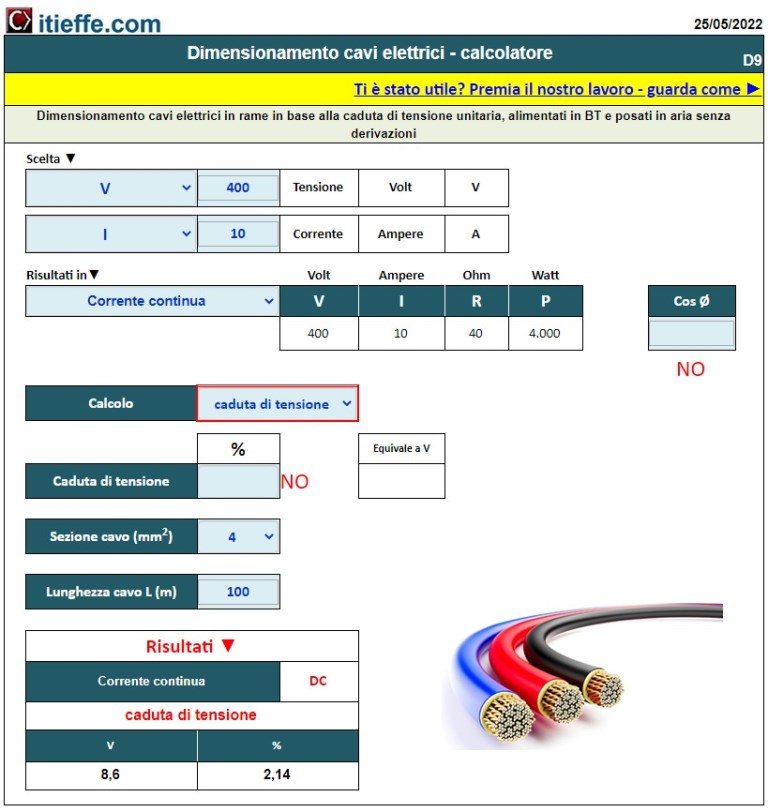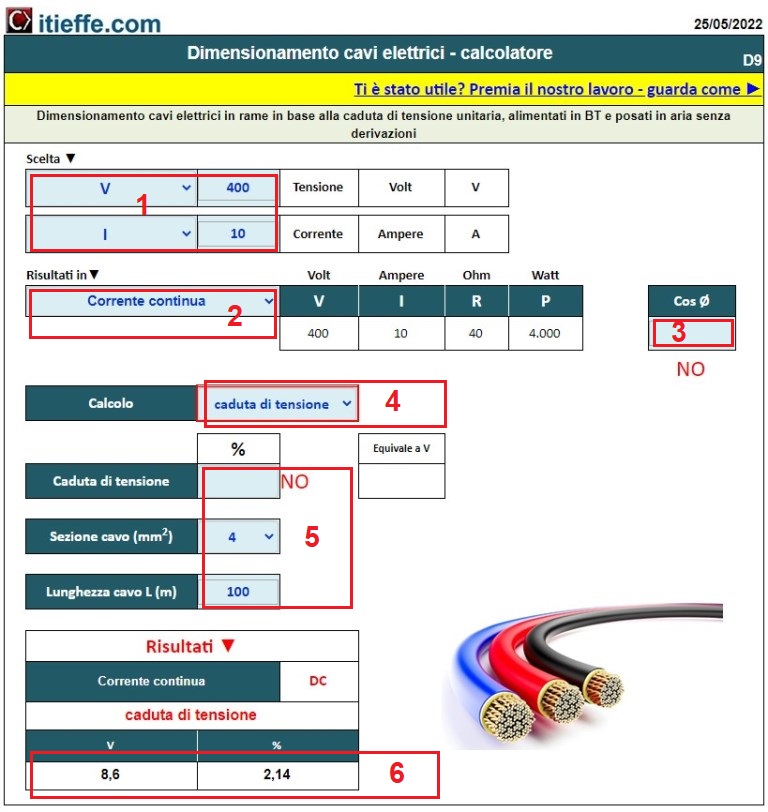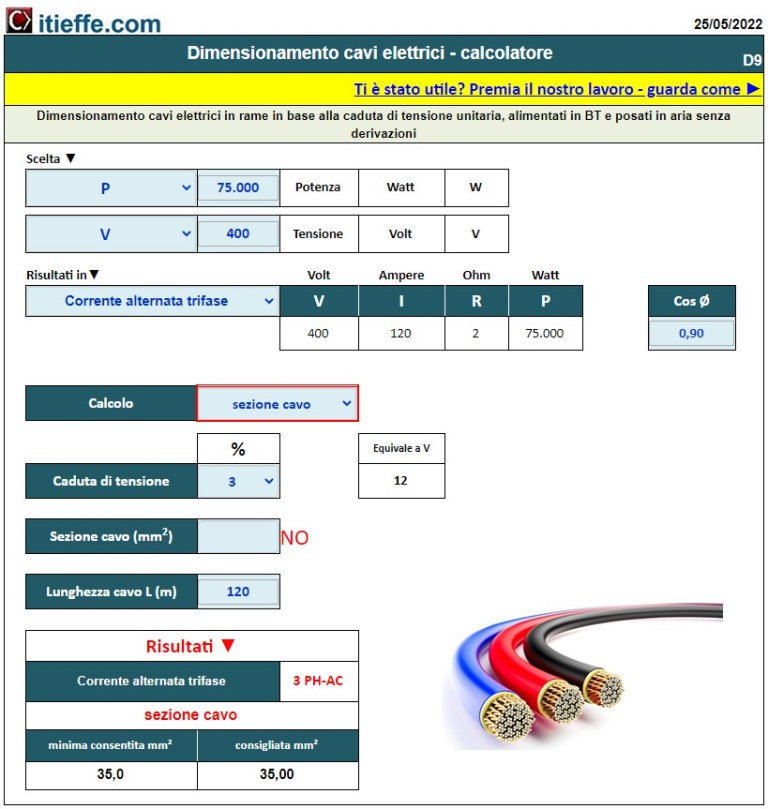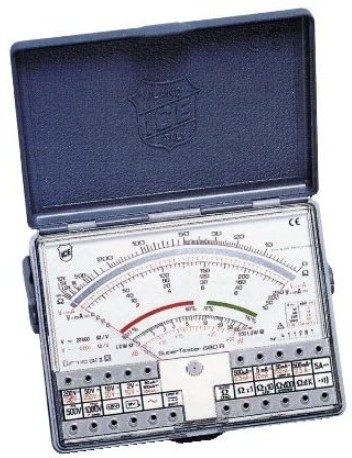Calculation of Sections of Electric Cables

It allows the sizing (but not only) of electrical cables starting from the interpolation of any parameter (P – I – V – R – cos Ø, voltage drop, cable length and conductor section) – The result is immediate – The program is fully functional and without restrictions.
Calculation of Sections of Electric Cables
Electricity is the beating heart of the modern interconnected society, powering everything from our homes to industries, advanced technology to transportation. Behind this invisible network of electricity are complex systems and components, and among these, electrical cables play a fundamental role. The careful choice of cable dimensions is crucial to ensure that energy flows reliably and efficiently, avoiding overloads and guaranteeing the safety of the installations.
The act of calculating electrical cable sections might seem like an abstract and technical task, but it is an essential step in the process of designing and implementing any electrical system. Too thin a cable could lead to excessive heating and potential failure, while an oversized cable could waste energy and resources. Finding the right balance between wire size and electrical load is an art that requires technical knowledge and engineering expertise.
In this program created entirely by Itieffe, dedicated to the "Calculation of Electrical Cable Sections", we will explore the fundamental concepts that underlie this practice, analyzing the variables involved and demonstrating the importance of correct cable sizing.
Our program will provide you with the tools necessary to carry out calculations regarding electrical cables starting from parameters such as power (P), current intensity (I), voltage (V), resistance (R), power factor (cos Ø), how to calculate the voltage drop, the length of the cables and the section of the conductors. You will learn how to avoid overheating, energy losses and comply with electrical safety regulations.
Whether you're an inquisitive novice or a seasoned pro, this program will equip you with the knowledge and resources you need to tackle electrical wire gauge calculations with confidence and accuracy. So, without further ado, let's dive into the universe of electrical cable dimensions and find out together how to ensure reliable and optimized energy distribution.
Ready to start? Let's proceed.
Of a disarming simplicity.
It allows the sizing (but not only) of electric cables starting from the interpolation of any parameter (P - I - V - R - cos Ø, voltage drop, cable length and conductor section).
The result is immediate.
Instructions

How to proceed
1 - the first thing to do is to enter the known values in the first 2 boxes choosing between: Power, Voltage, Current, Resistance (PVIR). The most used, of course, are power and voltage.
2 - choose which type of current will be used: continuous, single-phase alternating, three-phase alternating.
3 - indicate the value of the phase shift (in the case of DC current, the Cos Ø cannot be changed).
4 - indicate what you want to calculate: Voltage drop, Cable section, Cable length.
5 - let's change the values that allow it (two excluding the one we want to calculate)
6 - finally we analyze the results.
Let's take an example
We use the following drawing as a basis
We have a machine that must be powered with a power of 75 kW (75.000 W) and voltage 400 V 3Ph.
The electrical substation is located at a distance of 120 meters from the user and the voltage drop must be a maximum of 3%.
Calculate the required cable section.
Let's put the data into the program and see what happens.

The section of the cable required to distribute a power of 75 kW at a voltage of 400 V for 120 meters and with a voltage drop on the line not exceeding 3% is equal to 35 mm2 (normalized measure).
Easier than that
good job
itieffe.com >>> Watch the video ▼
Other free programs of the same kind offered by itieffe ▼
- Electricity - Electronics
- Calculation of color coded electric resistances
- Electric - electronic tables
- Electrical drawing diagrams
Calculation of Sections of Electric Cables
The program below is free to use.
To access the reserved version (see below), full page and without advertising, you must be registered.
You can register now by clicking HERE



